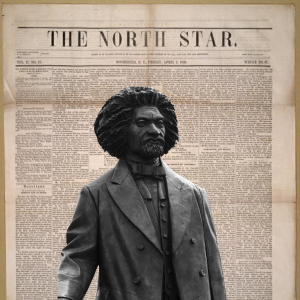Forgotten Patriots: Black Americans Who Shaped the Revolutionary War
5 min read
The American Revolution is often remembered through tales of powdered wigs, dramatic speeches, and the clashing of redcoats and colonists. But beneath that familiar narrative lies another story just as vital, yet far less frequently told. Over 5,000 Black men, both enslaved and free, fought for the cause of independence, while countless others contributed in subtler but equally impactful ways. Their roles ranged from front-line combat to strategic espionage, domestic labor, and poetic resistance.
In a war that declared liberty but was tangled in the contradictions of slavery, Black Americans stood at the crossroads of hope and hypocrisy. Yet they fought anyway, many with the belief that freedom for the colonies could mean freedom for themselves. Some gained it. Others were betrayed. But all deserve to be remembered.
Let’s bring these names out of the footnotes and into the spotlight.
1. Crispus Attucks: The First to Fall
Crispus Attucks is often referred to as the first martyr of the American Revolution. A man of African and Native American descent, Attucks was a dockworker and former enslaved person who found himself at the front lines of colonial unrest.
On March 5, 1770, British soldiers opened fire on a group of colonists in what would become known as the Boston Massacre. Attucks was the first to die—struck by two bullets to the chest. While some have debated the details of his role, his death lit a fire in the revolutionary imagination. He became a symbol of resistance and the complexities of Black identity in the fight for American freedom.
2. James Armistead Lafayette: The Spy Who Outsmarted the British
James Armistead was an enslaved man from Virginia who volunteered to serve the Continental Army under the Marquis de Lafayette. Posing as a runaway slave, he infiltrated British camps and gained the trust of General Cornwallis himself.
Armistead fed critical intelligence back to the American forces, including plans that helped secure the decisive victory at the Battle of Yorktown in 1781. Despite his service, he remained enslaved until Lafayette personally advocated for his freedom. In gratitude, James adopted “Lafayette” as his surname.
He’s one of the most effective spies in U.S. history—and yet most history books barely mention his name.
3. Peter Salem: From Enslaved Soldier to Hero of Bunker Hill
Born into slavery in Massachusetts, Peter Salem was eventually freed so he could fight for the American cause. He is best known for his role in the Battle of Bunker Hill in 1775, where he is credited with shooting British Major John Pitcairn—an act that boosted morale and demonstrated the bravery of Black soldiers.
Salem served for nearly the entirety of the war and was honored in several paintings of the time, though his identity was often left out of the narrative. His story highlights the bravery of Black patriots who risked everything for a cause that didn’t always promise justice in return.
4. Phyllis Wheatley: The Pen as a Revolutionary Weapon
Not all revolutionaries carried muskets. Phyllis Wheatley wielded a pen. Enslaved and educated in Boston, Wheatley became the first African American woman to publish a book of poetry in 1773. Her work often carried subtle messages of resistance and liberty, and she used her fame to correspond with figures like George Washington.
In one poem, she wrote:
“Proceed, great chief, with virtue on thy side,
Thy ev’ry action let the goddess guide.”
Wheatley’s presence in revolutionary culture was radical: a Black woman, enslaved yet literate, lauded for her intellect and moral authority. Her life was both a testament to resistance and a stark reminder of the contradictions of American liberty.
5. Prince Estabrook: Fighting for a Nation That Enslaved Him
Prince Estabrook was a slave who fought in the very first battle of the Revolutionary War—Lexington and Concord. Shot during the skirmish, he survived and continued to serve. His presence at that first clash between colonists and British troops makes him a foundational figure in American military history.
Though his owners permitted him to fight, Estabrook’s decision to risk his life highlights how Black Americans took the ideals of liberty more seriously than the men who often denied it to them.
6. Salem Poor: A Forgotten Legend
Salem Poor was another Black patriot who distinguished himself at Bunker Hill. According to military records, he fought with such valor that 14 officers petitioned the Massachusetts legislature to recognize his actions. They wrote:
“We would only beg leave to say, in the person of this said negro centers a brave and gallant soldier.”
Despite this praise, Poor returned from war to face the same systemic racism he left behind. His story reflects a recurring theme: Black excellence met with white amnesia.
7. Deborah Gannett & Black Women Who Disguised Themselves to Fight
While Deborah Gannett—a white woman—famously disguised herself as a man to fight in the war, records suggest that Black women may have done the same, though their stories are largely undocumented. One notable example is Catharine “Kate” Greene, an enslaved woman who supported the revolutionary cause by cooking, laundering, and nursing for troops.
Black women often served in hidden roles: as domestic workers in military camps, caregivers, and even saboteurs. Their contributions were essential, yet rarely acknowledged in mainstream accounts.
8. Colonel Tye: A Loyalist Turned Guerrilla Legend
Not every Black fighter sided with the Americans. Some, like Colonel Tye, joined the British, who promised freedom to enslaved people who fought for the crown.
Tye became a feared guerrilla leader in New Jersey, leading raids on patriot homes and freeing other enslaved people. His exploits struck fear into the hearts of colonial militias, and he remained a thorn in their side until his death in 1780.
Colonel Tye’s story complicates the narrative of “heroism.” He fought not for a nation, but for liberation—his own and others’.
Why Their Stories Were Buried
After the war, many of these patriots were discarded by the new republic. Despite promises of freedom, many Black veterans were re-enslaved or denied pensions. The selective memory of the American Revolution allowed their names to fade—because their stories undermined the myth of a purely white founding.
Textbooks gave us Washington crossing the Delaware, but not James Armistead saving Yorktown. We learned about Paul Revere’s midnight ride, but not Crispus Attucks’ blood spilled in the snow.
Reclaiming the Legacy
Understanding the full scope of the Revolutionary War requires a more honest, inclusive approach to history. Black Americans were not just footnotes—they were foundational. Their actions shaped the course of the war and challenged the hypocrisy of a slaveholding nation demanding freedom.
Today, efforts by historians, educators, and cultural institutions aim to correct the record. From reenactments by the Black Patriots Foundation to books like Forgotten Patriots by the Daughters of the American Revolution, there is a growing movement to honor the contributions that were once erased.
Revolution Within a Revolution
The Revolutionary War wasn’t just a fight between Britain and the colonies—it was also a war within a war: one fought by Black Americans for recognition, dignity, and freedom. They fought not just to break colonial chains, but to snap their own.
We owe it to them to remember their names, tell their stories, and ensure that in every celebration of American independence, we also celebrate those who fought hardest for it—and received the least in return.
What other hidden heroes from history do you think deserve their own spotlight? Let us know—we’re ready to tell their stories.







